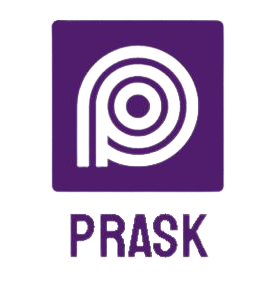Altering Schedule 40 wall thickness amid manufacturing may be a basic thought for businesses dependent on pipes with exact details for differing applications. This subject warrants closer examination to get a handle on the variables that impact such alterations and their potential suggestions.
The possibility of altering Schedule 40 wall thickness pivots on a few variables, counting the material composition of the steel utilized, the manufacturing forms utilized, adherence to industry guidelines, and the particular necessities of the aiming application. Any adjustments must guarantee the basic keenness, execution, and compliance of the channels with important standards and controls. Understanding the suggestions for modifying schedule 40 wall thickness is essential. It includes evaluating the effect of auxiliary judgment, execution characteristics, compliance necessities, and related costs.
Understanding Schedule 40 Wall Thickness:
Schedule 40 refers to the wall thickness of steel channels utilized in different businesses. It could be a standard classification system primarily utilized within the Joined-together States to classify the thickness of channels. Within the setting of carbon steel channels, the divider thickness regularly ranges from 5S to 160, with Plan 40 being one of the foremost commonly utilized determinations.
Material Composition
The composition of steel utilized in manufacturing pipes is basic in deciding the achievability of modifying wall thickness. Distinctive steel combinations have shifting levels of pliability and reaction to manufacturing forms. For occurrence, certain high-strength combinations may be safer to deformation, making it challenging to change their divider thickness without compromising auxiliary judgment.
Manufacturing Forms
The strategies utilized amid pipe manufacturing essentially affect the potential for altering divider thickness. Forms such as hot rolling, cold rolling, or expulsion each have special characteristics that impact the ease of altering divider thickness. For this case, hot rolling forms may offer more noteworthy adaptability for adjustments due to the ductility of the material at hoisted temperatures.
Industry Measures
Compliance with industry measures and directions is basic when considering adjustments to wall thickness. These standards characterize the least necessities for pipe execution, toughness, and security. Any modifications must adjust with these standards to guarantee the judgment and unwavering quality of the channels in benefit.
Application Necessities
The particular application of the pipes directs the vital wall thickness to meet execution and security benchmarks. Channels utilized for passing on liquids, gasses, or auxiliary bolsters have distinctive necessities based on variables such as weight, temperature, and natural conditions.
Basic Astuteness
Keeping up basic astuteness is foremost when adjusting wall thickness. Any modifications must not compromise the quality, steadiness, or load-bearing capacity of the channels. Basic disappointments due to lacking divider thickness might lead to disastrous results, counting spills, cracks, or collapses, imperiling lives and property.
Execution Contemplations
Changes in wall thickness can influence different execution characteristics of the channels, counting their capacity to resist weight, temperature varieties, and erosion resistance. Thicker dividers may offer greater quality and toughness but seem moreover increase weight and fetched. Alternately, more slender dividers may give fetched reserve funds but may be more vulnerable to misshapen or failure under certain conditions.
Compliance Requirements
Alterations to wall thickness must comply with pertinent industry measures, codes, and controls to guarantee item quality and security. Non-compliance can result in lawful liabilities, administrative fines, and harm to the notoriety of the producer. Following built-up guidelines is basic to illustrate the unwavering quality and fitness-for-purpose of the altered pipes.
Cost Suggestions
Altering wall thickness amid manufacturing can have critical cost suggestions. Extra costs may emerge from fabric wastage, gear alterations, quality control measures, and testing strategies. Producers must carefully assess the cost-benefit proportion of altering wall thickness to decide its possibility and financial reasonability in connection to the intended application and advertise request.
Conclusion
Whereas Schedule 40 wall thickness can hypothetically be adjusted during manufacturing, a few components ought to be taken under consideration to guarantee the achievability and reasonability of such alterations. Material composition, fabricating forms, industry guidelines, and application necessities all play an urgent role in whether adjustments are conceivable and prudent. Any changes must be carefully assessed to preserve auxiliary keenness, execution measures, compliance prerequisites, and cost-effectiveness.










